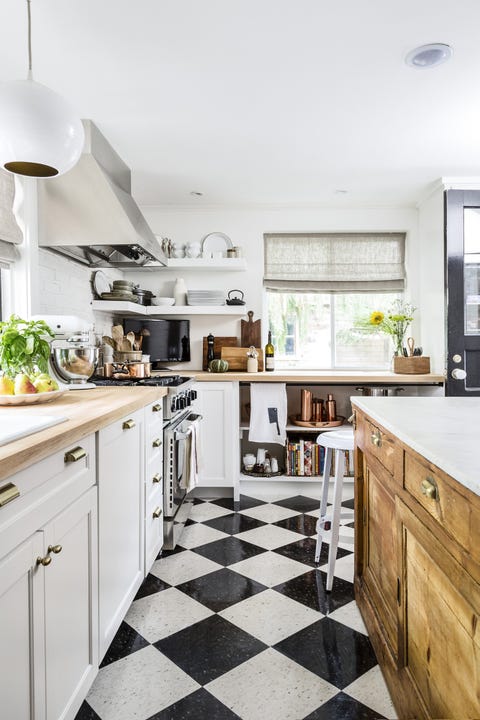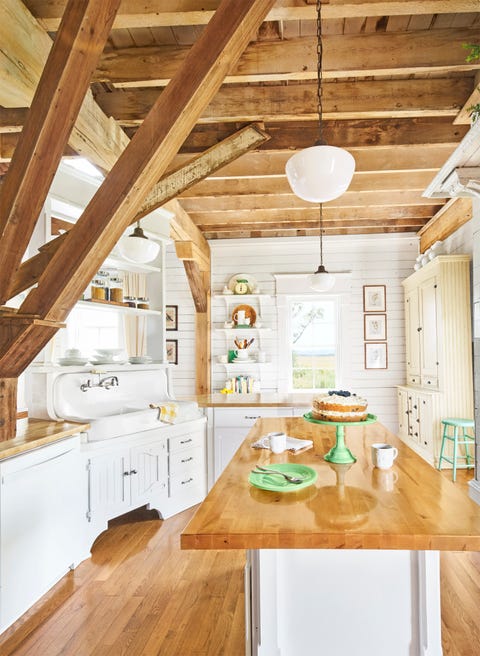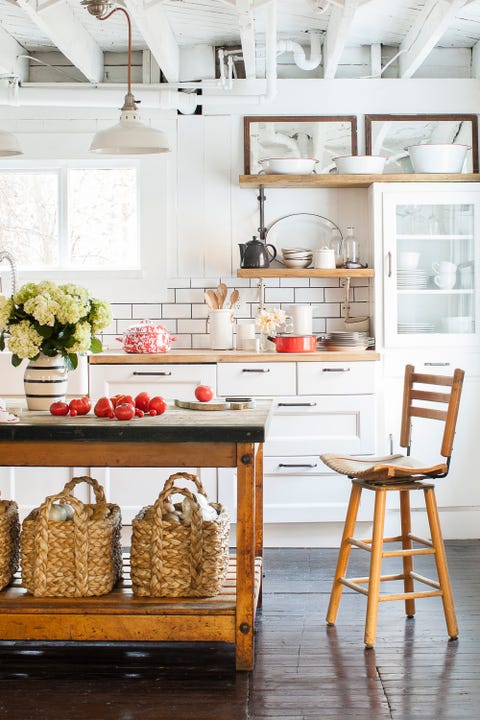Do You Have A Seam In Your Butcher Block Counter Garden Web
It's no wonder butcher-block countertops are a constant in cozy country cottages and rustic farmhouses alike. The surface, made up of assembled wooden boards, is warmer and more inviting than other materials and never goes out of style. Taken directly from nature, butcher-block is biodegradable and eco-friendly—and it brings a bit of an earthy element into any kitchen.
Since wood is so neutral, many homeowners mix with other materials: You could install all butcher-block countertops, incorporate a built-in cutting surface, or opt for a butcher-block island instead.
But butcher-block has its drawbacks too. We cleared through the sawdust to uncover the choices available, as well as the price and pros and cons.

Photograph by Donna Griffith, Design by Karen Bertelsen
Types of Butcher-Block Countertops
There are so many options for butcher-block countertops, starting with the various species of wood, including maple, cherry, walnut, and oak.
"Hard rock maple has the highest density and is a closed-grain hardwood which makes it the overall surface of choice," National Kitchen Countertop Sales Manager
at John Boos & Co. Steve Pless tells CountryLiving.com. Happily, it's also more affordable than its closed-grain counterparts, cherry and walnut, which also make great countertops. And then there's oak. An open-grain wood, oak isn't ideal for direct food preparation, Pless explains. However, when lacquered or varnished, the material is just fine for general purposes.

Hard Rock Maple
· Lightest closed-grain hardwood
· Strongest and most dense of all species of maple
· The most affordable kitchen countertop

American Cherry
· Mid-tone, closed-grain hardwood
· Sought after for its attractive, red-tinted color
· More expensive than maple

American Black Walnut
· Dark, closed-grain hardwood
· Valued for rich, deep hue
· More expensive than maple

Appalachian Red Oak
· Open-grain wood with lots of character
· Wood grain is more visible than in other species
· Not intended for food prep
Beyond the type of wood, you should also consider the kind of construction: edge grain (in which the boards are laid parallel with their "edges" showing), end grain (in which small square pieces are are lined up vertically with the "ends" showing), and blended (in which different lengths are joined with no particular pattern).

Edge Grain
· Full-length continuous rails
· Placed side-by-side, or parallel, and glued
· Most common

End Grain
· Small square pieces of wood standing on "end"
· Placed vertically and glued in "checkerboard" style
· Usually more expensive

Blended
· Lengths of finger-jointed interior rails and full-length exterior rails
· Feature plenty of color variation between light and dark wood

Blended (Walnut Stain)
amazon.com
· Lengths of finger-jointed interior rails and full-length exterior rails
· Feature plenty of color variation between light and dark wood
As for finish, Pless recommends homeowners think about the way they see themselves using their butcher-block countertops. For food prep areas, you'll want to apply (and periodically reapply) an oil finish. But if it's just a general or dining surface, choose a lacquer finish, since an oil finish could come off on clothing or paper.
The Cost of Butcher-Block Countertops
The price you pay is based on the species and construction, as well as the area in which you live.

Annie Schlechter
But butcher-block is generally pretty competitive with other countertop materials, Pless says, adding that a standard edge-grain maple island top retails at around $35 to $38 per square foot—cheaper than granite but more expensive than laminate.
Cost of installation varies by location as well, so reach out for a quote.
"I would estimate one hour per linear foot for the amount of time it will take to install the top," Pless advises. "A top that is 60 x 30 inches would take an estimated five hours for install. If the labor rate is $25 per hour, then the install would cost $125. If the install is $65 per hour, the install would be $325."
Whether or not you hire a pro to help is entirely up to you and will probably depend on the difficulty level of your project.
Pros and Cons of Butcher-Block Countertops
Pro: They're as easy on the knives as they are on the eyes. The only countertop that can actually be used as a cutting surface, butcher-block won't dull your knives like stone or concrete counters. The soft surface also makes for a quieter kitchen. And for those who are a bit clumsier, dishes are less likely to shatter when dropped on wood versus stone.

Max Kim-Bee
Con: Butcher-block is susceptible to scratches, dings, and stains. If you plan on chopping directly on your countertops, you're going to end up marking things up a little (or a lot). That glass you dropped might just leave a dent, and the wine inside could settle into a stain.
Pro: But they're easily restored. "To remove nicks or gouges after years of wear, just sand the surface [with fine sandpaper] the same way the grain runs, and re-oil," Mandy Cook, another John Boos & Co. rep, tells us. "Sanding reveals an entire fresh new cutting surface." Or, to keep butcher-block scratch-free, simply use a cutting board as you would on any other countertop.
When it comes to cleaning, soap and water should usually do the trick, but a little diluted vinegar or bleach can also serve as a disinfectant and deodorizer. To scrub out deep stains, borrow this clever cutting board-cleaning trick: Cut a lemon in half, dip in salt, and rub on the affected area.
How to Care for Butcher-Block Countertops
Wood does dry out. To keep it gleaming, apply food-safe oil (such as a standard food-grade mineral oil) to oil-finished countertops every few weeks. On the other hand, varnique tops, or those finished with semi-gloss seal, shouldn't require much elbow grease at all. You can refinish both as needed, with a non-toxic polyurethane gel (like EZ-DO).
Taysha Murtaugh Lifestyle Editor Taysha Murtaugh was the Lifestyle Editor at CountryLiving.com.
This content is created and maintained by a third party, and imported onto this page to help users provide their email addresses. You may be able to find more information about this and similar content at piano.io
Do You Have A Seam In Your Butcher Block Counter Garden Web
Source: https://www.countryliving.com/remodeling-renovation/a25782591/butcher-block-countertop/
Posted by: williamsannot1974.blogspot.com

0 Response to "Do You Have A Seam In Your Butcher Block Counter Garden Web"
Post a Comment